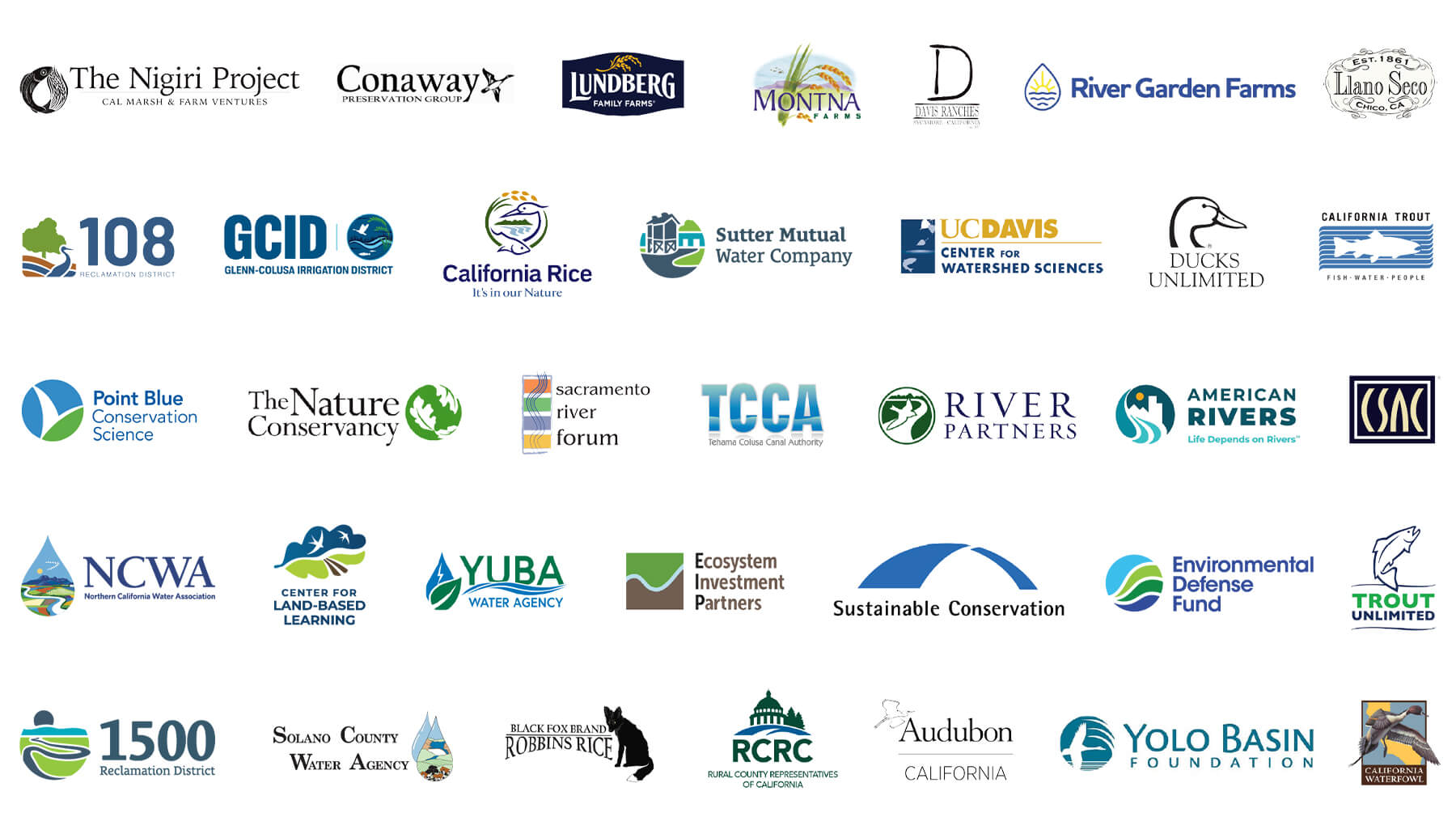with Four Actions on

New Infrastructure, Management and Restoration Practices that connect working lands, bypasses, refuges, and rivers to support fish, birds, wildlife, and people in the Sacramento Valley.
See How We Activate the Floodplains
In a managed flood control and water delivery system, we must focus on reconciliation ecology if we are to ensure there is water and habitat for our native birds, fish, and wildlife. Through this video, we highlight where and how we can create habitat while ensuring a functioning flood control system, safe drinking water for communities and are able to support our farms and working lands.
Reactivating our California floodplains protects communities from catastrophic floods, allows working lands to remain productive, provides wintering habitat for migratory birds, generates food for endangered fish, and supports several hundred wildlife species year-round. We cannot turn back the clock to how the Central Valley looked before western settlement, but in specific ways, we can mimic how the historical floodplains once functioned to allow native species to thrive.
We outline four key actions that bring much-needed stability in an ever-changing climate and growing demand for California water. Through increasing the number of years bypasses are activated, by supporting winter flooding on ricelands, ensuring water is delivered to wildlife refuges, and restoring habitat in key riparian zones, we can provide the habitat that fish and wildlife depend on.
Download Info DocumentActivating the Bypasses in Drier Years
Bypasses (Yolo, Sutter, Tisdale, Sacramento) typically provide benefits to fish and wildlife in normal or wet years, when river flows are higher and relief is needed to prevent flooding in areas across the valley. Studies reveal wetter years, when bypasses are activated, have a profound benefit to native and migratory species, so what if we could allow water to spread out on these same lands in drier years?
Through habitat gates, or managed notches, we can allow the water to spread out onto the land, even during lower flows. The water still drains down toward the Delta and returns to the system as it would if in the river, albeit this time, with the opportunity for fish and birds to take advantage of this valuable habitat.
Winter Flooding of California Ricelands
Each year, approximately 270,000 acres of rice are flooded to create wintering wetland habitat for birds, fish, and wildlife. While migratory waterfowl and shorebird species can access various locations, fish are reliant on human management for floodplain food access, especially when bypasses are not activated.
Much of the food production occurs on today’s ricelands, however, these sites are disconnected from the river behind levees, thus preventing fish access. But the fields can still produce the “bugs” juvenile salmon prefer when migrating to the Pacific Ocean. After harvest, rice farmers use water to help decompose the remaining rice straw, paired with sunlight, the organic material breaks down to support the billions of zooplankton that reproduce at rapid rates. Instead of having the zooplankton die off, we have a chance to send that food into the river.
Learn More About the Fish Food Effort
Wildlife Refuges & Reserves
Supporting five National Wildlife Refuges and three Wildlife Management Areas.
National and state wildlife areas are important havens for California’s native species. With improved water reliability, water managers can continue to deliver water to these sites year after year. When these refuges are supported with the necessary water levels during seasonal needs, we can help mitigate against extreme heat and dry spells while maintaining water quality. Continuing to deliver water to the refuges can reduce the stress felt by wildlife that depends on these wetlands. Across the Sacramento Valley, refuges and wildlife management areas are located close to rivers, working lands and bypasses, which all work in unison to support fish, birds, and reptiles year-round.
Activating Riparian Zones
Seasonal Flooding of Riverside Lands
The meandering Sacramento River system has long shaped the valley’s landscape, once pulsing across floodplains during winter and spring to create abundant wetted habitats. Today, much of that overbank floodplain has been lost. By allowing seasonal flooding of riparian lands, we can mimic the functions of the historic floodplain.
Reconnecting and restoring these in-river and river-adjacent habitats often requires strategic land grading and infrastructure modifications to make the most of limited river flows. The variety in size and locations of these riverside lands, including marshlands, oxbows, sloughs and side channels, in and along the rivers offer essential habitat diversity for endangered fish and migratory birds. Whether located on working lands or within protected areas, these spaces provide habitat when species need it most, without compromising public safety or agricultural use.
Moving Forward
By connecting working lands, bypasses, wildlife refuges, and the rivers, we can improve our flood protection system and create a more sustainable future for fish, birds, wildlife, and people. But it can’t be done alone, it will take the entire valley working together to see a vibrant and healthy watershed. Through collaboration among local, regional, and national partners, we can uncover innovative solutions, determine appropriate funding sources, and reduce cumbersome permitting processes that will ultimately lead us to our goal of creating a sustainable valley for all.

A 35-member organization representing landowners, irrigation districts, higher education, and conservation groups. The coalition, and the collaborative model of dynamic conservation, has resulted in farms, refuges, and managed wetlands providing essential habitat for waterfowl and shorebirds as well as potential food production for endangered fish species.






